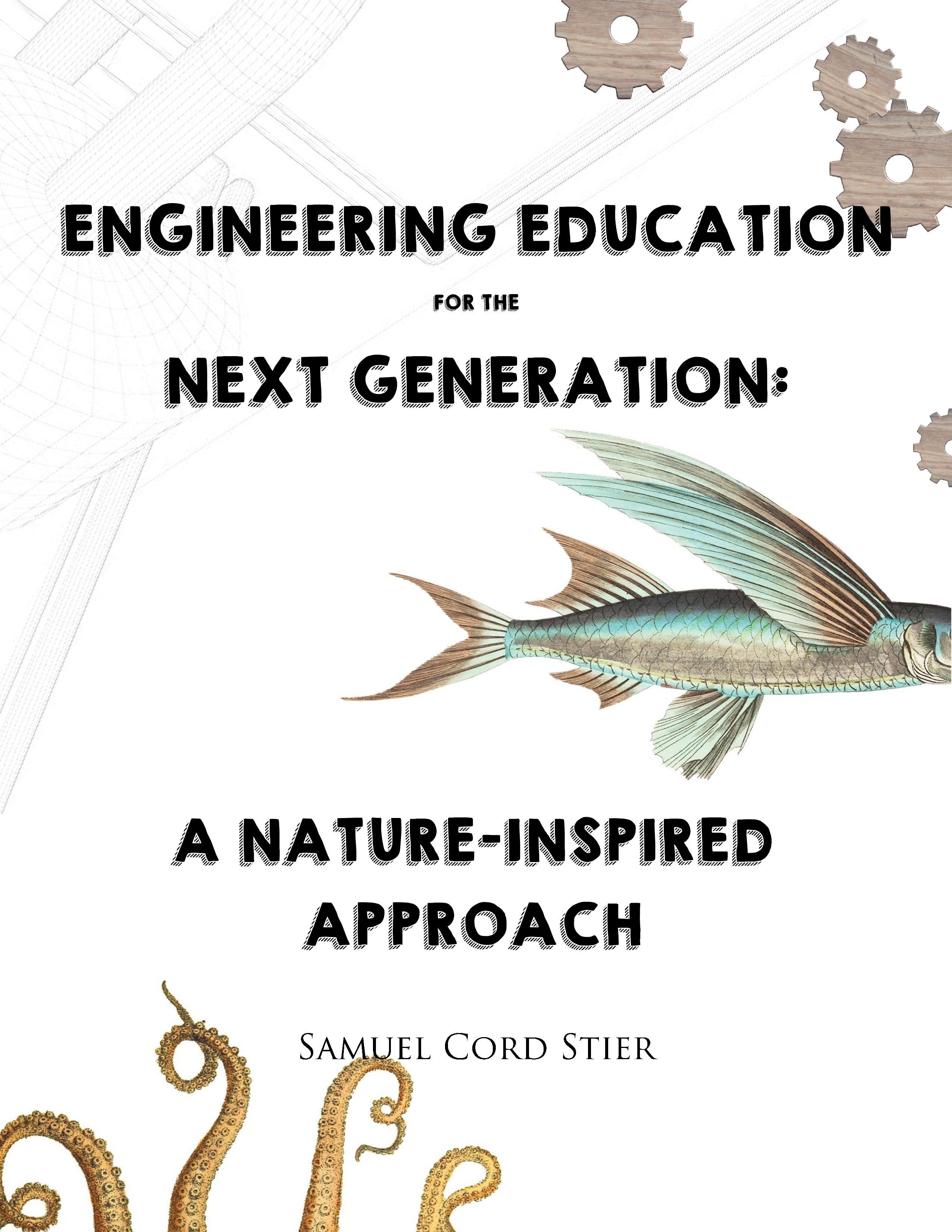In 2018, the publisher W.W. Norton and Company invited Sam Stier (Director of The Center for Learning with Nature) to write a book about his Nature-inspired approach to teaching engineering. The book, Engineering Education for the Next Generation: A Nature-Inspired Approach, is the result.
Intended for classroom and other educators of students from elementary to high school, Engineering Education for the Next Generation is a broad, yet in-depth introduction to Nature-inspired engineering as an engaging approach to teaching engineering for any teacher who wants to understand more about engineering design in particular, its relation to the larger subjects of STEM/STEAM, and how to engage students from all backgrounds in a way that meaningful transforms their outlook on the world and their own creativity in a lifelong way. Here’s what some reviewers have had to say about it:
“Most of humanity’s forthcoming challenges will depend for their solution upon engineers, yet relatively few American youth seem to be interested in careers in engineering. How could this be? It is in part because engineering basics as taught in most schools, if taught at all, frankly, seem B-O-R-I-N-G. Sam Stier offers an altogether new hands-on approach to teaching engineering that draws upon the excitement of living things that are all around us in the world. He transforms the subject into what it really is: not just fascinating but truly exhilarating. I only wish that some of my K–12 teachers would have read this extraordinary book.”
—Norman R. Augustine, Chairman & CEO, Lockheed Martin (1995-97); Former Chairman, National Academy of Engineering; Past President, American Institute of Aeronautics and Astronautics; Former Chairman, American Red Cross
“As a 30-year veteran of STEM education, I consider Engineering Education for the Next Generation: A Nature-Inspired Approach among the best resources I have ever seen. It combines engineering—an area given more attention in the Next Generation Science Standards—with sustainability—an area demanding more attention in modern society. Further, it connects students with nature through biomimicry, and teaches them how to think analogically and creatively—engaging them and empowering them as learners.”
—Brett Criswell, Ph.D., Assistant Professor of Secondary Education, Science, West Chester University
To learn more about the book, click here (Amazon) or here (W.W. Norton & Co.) or find the book at your local bookstore here. All author’s profits from the book are being donated to the work of The Center for Learning with Nature. For more information, the Table of Contents, Introduction, and first chapter are also below.


This award is from an organization that ranks books largely based on ratings and sales.
How to Make Surfers Invisible (An Introduction)
Chapter 1: Why a Nature-Inspired Approach?
Makes the case that engineering education is broadly relevant to all students, not just those who may become engineers, and highlights the value of a Nature-inspired approach in terms of meeting Next Generation Science Standards, integrating STEM/STEAM subjects, enhancing college and career preparation, generating student interest, fostering a connection with Nature, re-energizing teachers and their practice, and more.
Chapter 2: Getting Started
Offers practical and effective ways to introduce the fascinating subject of engineering and Nature-inspired engineering to students of all backgrounds.
Chapter 3: Learning Structural Engineering from Schoolyard Trees
Demonstrates how to unpack fundamental concepts in material science and structural engineering by going no further than the schoolyard. Among other activities, students make models to see physical stress effects using plastic from the garbage bin and learn how professional engineers borrow ideas from trees to improve the safety of buildings and bridges.
Chapter 4: Enlightened by Bones
Explores how professional engineers and designers learn from bones how to make designs lighter without sacrificing performance. Students apply what they’ve learned to their own redesign of a common household object.
Chapter 5: Fun With Fluids
Investigates engineering concepts related to fluid dynamics, such as learning from snails how to develop flexible armor. Students experiment with viscosity, and design and test gliders based on aerodynamics principles learned from dandelions.
Chapter 6: Teaching Sustainability Through Engineering
Brings a complex and essential topic down to Earth in an engaging, optimistic way. Explores issues and innovations in manufacturing, energy, chemistry, and waste inspired by the ingenious, thriving world around us. Solution-oriented student activities include making cement from car exhaust, a plant-dye-based solar cell, and other activities based on the Five to Thrive framework.
Chapter 7: Taken by Swarm (Nature-Inspired Computer Science)
Explores the world of algorithmic thought and explains how professional computer scientists borrow ideas from organisms such as ants and from processes such as evolution to improve movies, video games, and more. Activities examine how complex behaviors can result from simple rules.
Chapter 8: Students Invent!
Discusses the steps involved in Nature-inspired engineering and innovation, and provides practical activities for teachers to apply to mentor students of any age in using design processes in student-led projects, synthesizing students’ skills, and building young peoples’ sense of empowerment and possibility.




